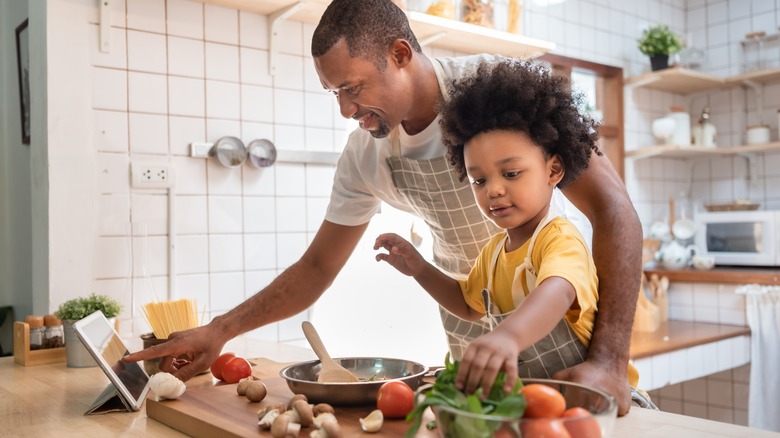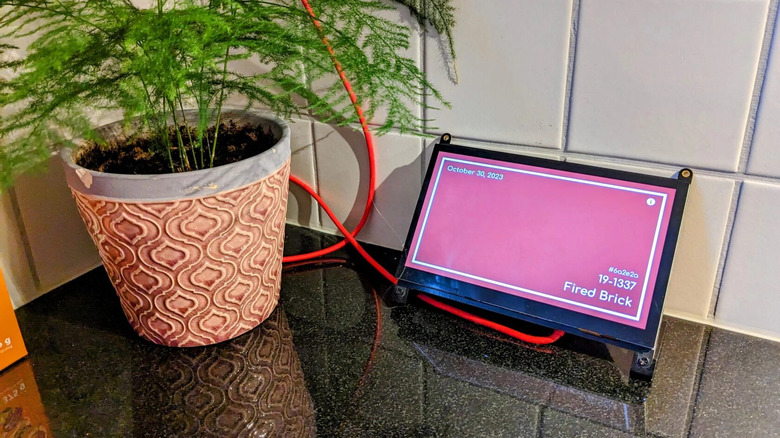This Raspberry Pi Smart Display Project Could Be A Great Addition To Your Kitchen
Over the past decade, a million cool devices have quietly made their way into every nook and cranny of your home, especially the kitchen. In fact, there's a steady rise of smart kitchen gadgets dominating that space — think app-controlled coffee machines, Wi-Fi-enabled air fryers, and hands-free faucets. But if there's one device worth adding to your kitchen countertop, it's a smart display. This nifty gadget is a hub of efficiency and entertainment as it can do everything from show your current electricity consumption to make your grocery list or walk you through the most complicated recipes.
But here's the thing: smart displays come with a steep price tag, often hundreds of dollars. If you just need basic functions like displaying information or playing music and you happen to have a Raspberry Pi and a small monitor lying around, here's a DIY smart kitchen display project you can make for as cheap as $19.
A basic but handy smart display for your kitchen countertop
Developed by software engineer Stanislav Khromov, the Raspberry Pi-based smart kitchen display is a bit different from your usual Google Nest Hub or Amazon Echo Show that features a voice assistant and a host of other functionalities. Instead, the project simply displays information on an always-on Chromium browser. The browser, which is installed with the Tab Rotate extension, automatically cycles through a list of websites, including the Merriam-Webster Word of the Day, 1001 Albums You Must Hear Before You Die, and Appreciation Jar, among other things. The list is readily customizable, so any other web page can be added to the rotation.
While basic, the great thing about this smart kitchen display is its simplicity. It's a beginner-friendly project that requires only three components: the Raspberry Pi 4 priced at $45, a seven-inch monitor at $80, and a RaspiKey eMMC memory at $19 (more reliable than the typical SD card). The software configuration isn't too heavy, as well as it's mostly just setting up the Tab Rotate extension. If you know a bit of CSS, you can opt to install the User CSS extension to adjust the web pages slightly to make them more fitting for a small screen.

